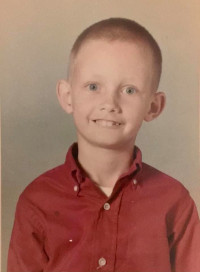

Before 1983: In 1966, my family moved from rural Arkansas to the thriving metropolis of Memphis, Tennessee. It was my first year of living in an air-conditioned house and eating Big Boy hamburgers. One day my father brought home a cardboard box of Marvel comic books given to him by a customer. Prior to my introduction to artist Jack Kirby, I drew cartoon characters from television, but 1966 was my renaissance year.
When I started creating things out of my own head, these subjects took the form of cartoons, monsters, robots, and futuristic cityscapes. Hundreds of drawings overflowed my spiral-bound notebooks in grade school from 1966 to 1972. I drew only occasionally as a teenager through 1977 because I was more interested in the guitar and music than art. Little of my artwork from this period is instructive, but what is of consequence in my development are periods of incubation where I ceased doing something and came back to it after a time.
These Portfolio pages begin with foundation classes for my BFA degree. Hover to find linked images.
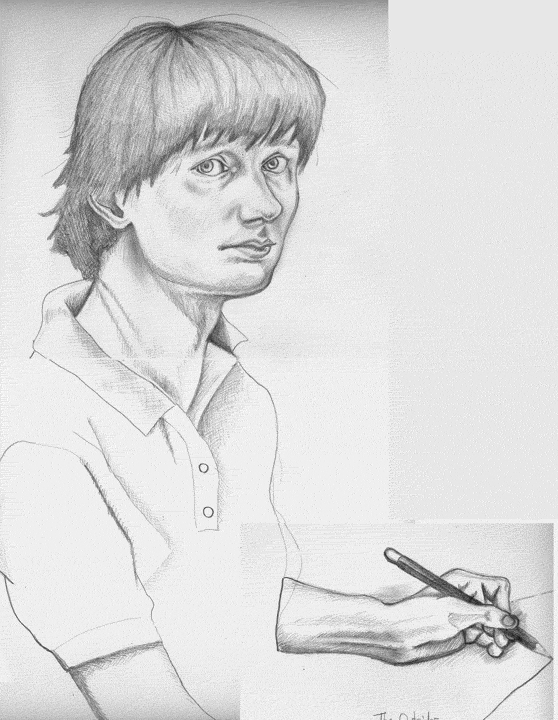
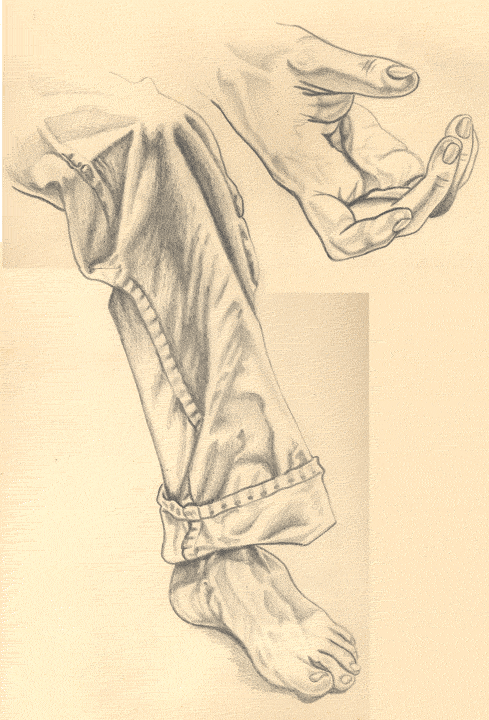
Although most of the artwork shown in these pages was made during my time in art school, it was not—strickly speaking—made for art school. Of the works featured on this first page, only Lemon Glove was assigned in class.
Many of these extracurricular projects were later included in my BFA thesis show. It is possible that some projects that I created for myself were included under an umbrella credit for my BFA degree.
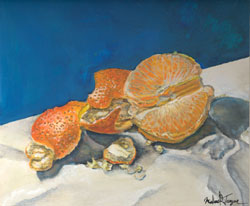
Acrylic on paper: I made art books during my early college days, first as a music major and then as a graphic arts major. My last book coincided with foundation classes for my fine arts degree. This small study was one of the last things to go into that book. (Examples from these art books may be seen on my first Sketchbook page.)
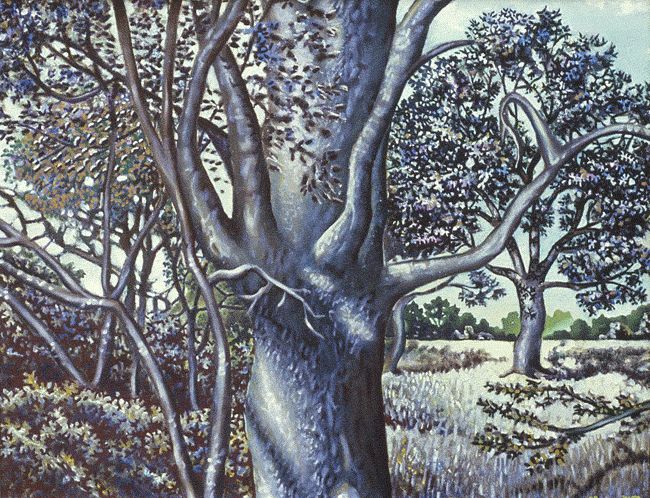
I did not think much of this painting when it was created. I ended up destroying the canvas because its style did not fit into my evolving aesthetic. Although this tree was from my backyard, nothing else was. The below photograph of myself (technically called a photogram) was taken with a camera obscura I built in a design class. It offers proof of my claim: The backyard view is nearly identical to the one presented in the landscape, making this something of a hybrid Plein air painting and not a genuine article.
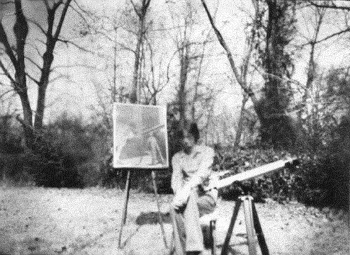
Photogram, circa 1983: The painting on exhibit in my photogram was painted in acrylic and finished with water-based varnish. This explains the high glare. I did not like the way the acrylic paint behaved on stretched canvas due to the difficulty of blending colors.
I did not abandon the acrylic medium but, instead, used it in projects that had a design or three-dimensional component. The medium was also better suited to works on paper. I learned this from my art book days.
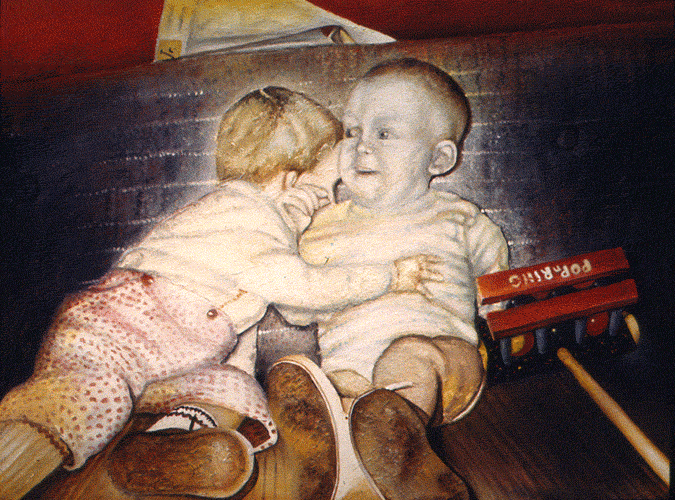
This study in technique was based on an overexposed Polaroid of myself as a toddler, circa 1959. An undercoat of modeling paste was added to bulk up the acrylic paint’s appearance. I lastly applied a heavy acrylic gloss gel to make the finished work resemble a varnished oil painting.
Several paintings made around this time were never properly photographed. The majority of these were personal projects. Although this painting was photographed, it was not a high quality image.
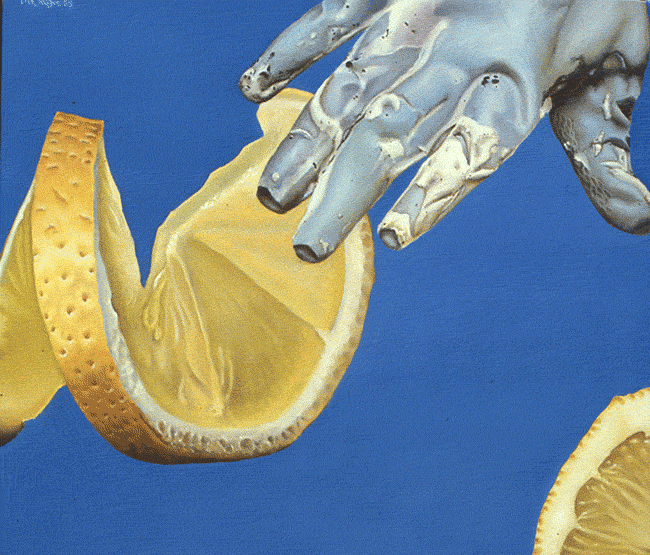
This is the second canvas I painted in my first studio painting class. Students assembled photo collage elements clipped from magazines.
Photo-realism, as a technique, occupies a small corner in my toolkit. Because so many artists pursue it as their primary style, it is difficult to forge an original perspective within it.
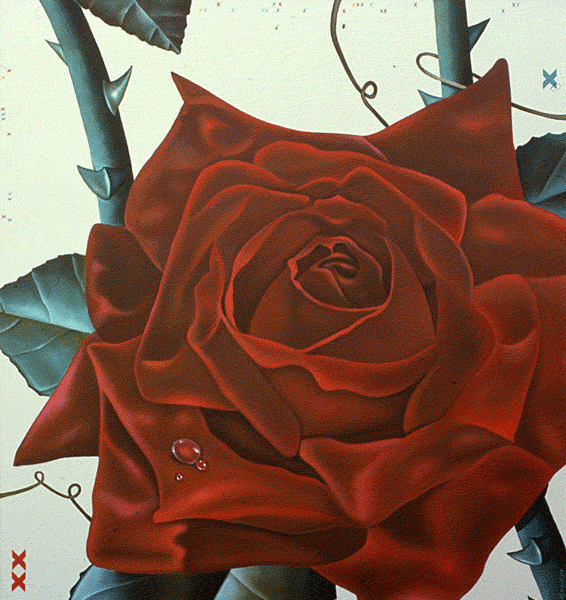
When I first started painting, I was more experimental with my materials. I used acrylic liberally, and even latex enamel house paint. (Such is the constitution of a thriving but unprofessional art student.) “Archival” entered my vocabulary and work process during graduate school, for the benefit of theoretical collectors of my work. This painting, like other late Memphis paintings, was large.
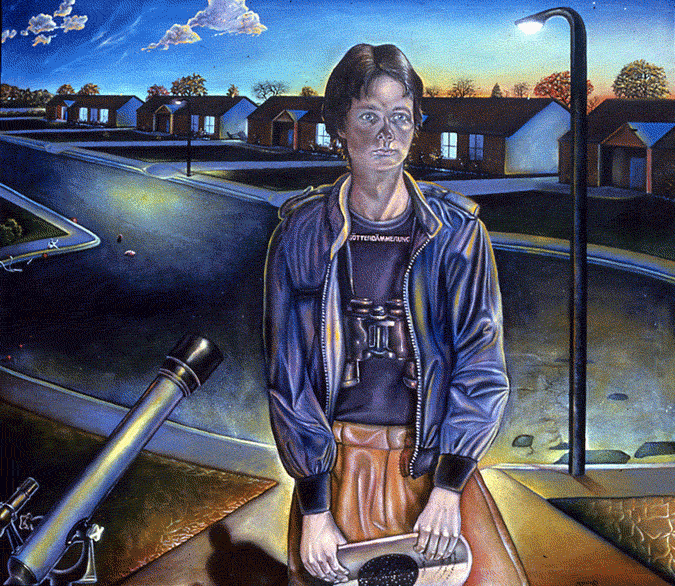
There is a self-absorbed tendency when one turns to figurative realism as a style. Like Rembrandt, I was my only available model; and also like Rembrandt, it was impossible to escape the allure of confession.
This piece, and the one below, were inspired after works of classical music. Classical music was a major influence at this time.
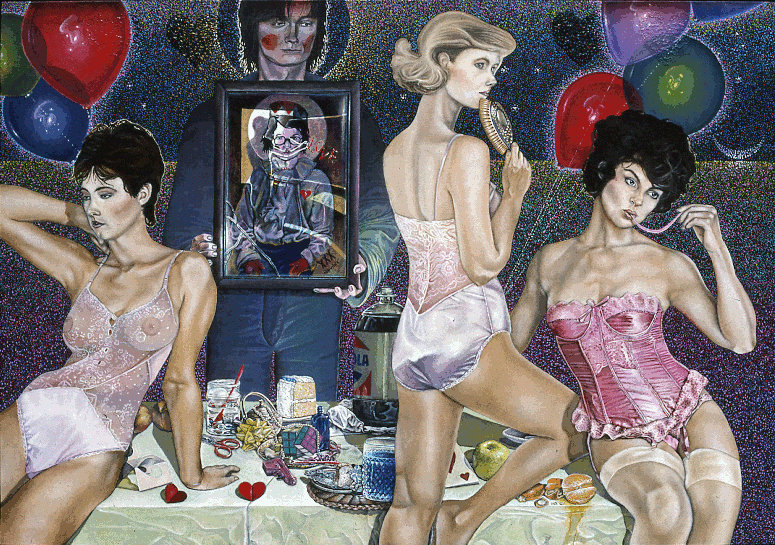
Obviously, where one lifts anatomy from Victoria Secret catalogs, one is apt to get it right, although there are unintended Mannerist distortions in the figures’ elongated necks.
I portray myself as Petrouchka in this picture, and hold a portrait of myself also dressed as Petrouchka. My third image is superimposed in the mirrored glass covering this framed portrait, where I am seen, silhouetted against a window, as the painter. This idea of was lifted from the Spanish painter Velazquez and Dutch painter Van Eyck. Art historical references appear regularly in my developmental work.
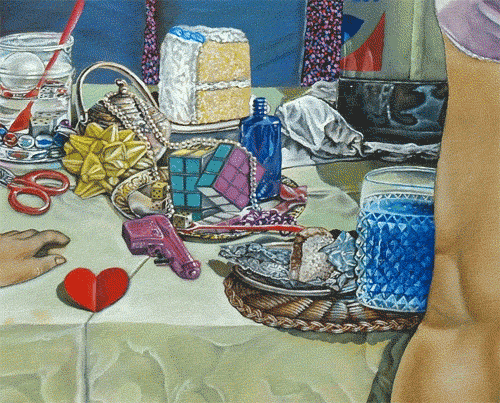
Petrouchka (detail). This canvas was one of several large canvases made prior to my BFA show. While the three figures were painted in oil, much of the still-life was painted in acrylic, because I realized that detail required thinner paint for more control, which water-based acrylic provided. (This still-life was retouched with oil paint in 2021.)
Copyright © 2016 michael l. teague all rights reserved.